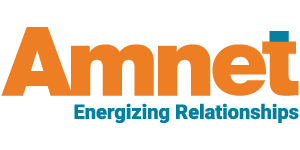[Approximate Reading Time : 4 mins]
As the world embraces the digital transition post the COVID-19 pandemic, education publishers must look for ways to stand their ground in the face of stiff competition. Many educational institutions have adopted digital learning in recent times, as it complements core subjects and makes the learning experience more interactive and exciting, thus encouraging active participation. So what can publishers do?
Adopt Technology
Education publishers were already becoming digitally oriented in early 2020, but COVID-19 accelerated their shift in this direction. They must continue to do so without losing the core competencies that people associate their brand name with. Their growth has been threatened from time to time by challenges like open educational resources (OER), and now, with the sales of print versions flatlining, books are getting a new digital look. A person uses the internet for an average of six hours and 54 minutes daily. This can be used profitably in the educational market by offering educative solutions integrated with content. Digital courses are no longer dispensable or unnecessary.
Author Tools and Multimedia Content
Authors need to think beyond traditional methods and become content experts, revamping and granulating the whole information to a digital experience—presenting content in microlearning segments through multimedia. Authoring tools allow the addition of interactive and customizable multimedia content; reduce the time taken to edit, create layouts, collect resources, and update; and speed up the creation, modification, and distribution of content on the whole. Having the right authoring tools will secure the future of educational publishing companies.
Fight Piracy
Single-use customizable online products with robust digital rights management (DRM) and licensing tools ensure the protection of intellectual property rights and prevent content piracy. The access, number of devices, and the right to print and copy can be restricted, while still safely distributing encrypted content through subscription models. Printing licenses for textbooks can be prohibited from resale.
Digital copies can be created easily, quickly, and in an eco-friendly fashion, thus optimizing monetization. Additional information and the analysis of content consumption patterns that are not available in OER will boost sales.
Extend Market Reach
Digital publishing lifts the reputation of publishers by presenting them as inclusive and forward thinkers, as with digitization comes accessibility. Learners will be able to adjust the font size, color, and contrast levels with read-aloud and keyboard-control options, which improve hits in search engines. Digital courses and eBooks tend to be affordable for students with limited resources and can provide them with useful insights while also mapping their progress, which teachers should find particularly helpful.
The expectations of learners have set a new benchmark, and to surpass that, technological help is required. Collaborating with technology experts and providing them with a dynamic work environment with the proper tools help to grow the talent pool, which will drive an education publisher’s business farther. Publishers have to deliver education according to changing trends and market them efficiently to run this race successfully.
Amnet has been helping leading publishers by providing exceptional solutions for more than two decades.
Sources1. https://elearningindustry.com/future-of-educational-publishers.
2. https://www.getmagicbox.com/blog/look-at-future-educational-publishing-2021-and-beyond/.


